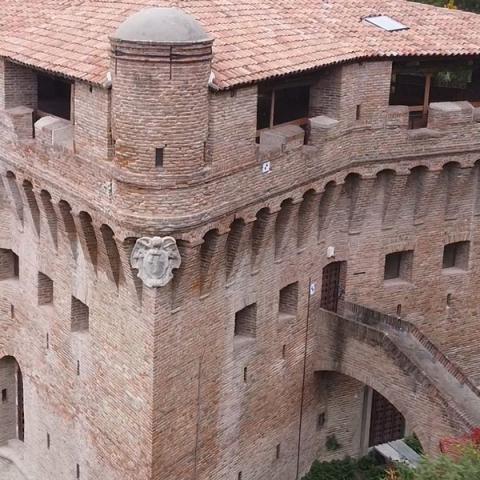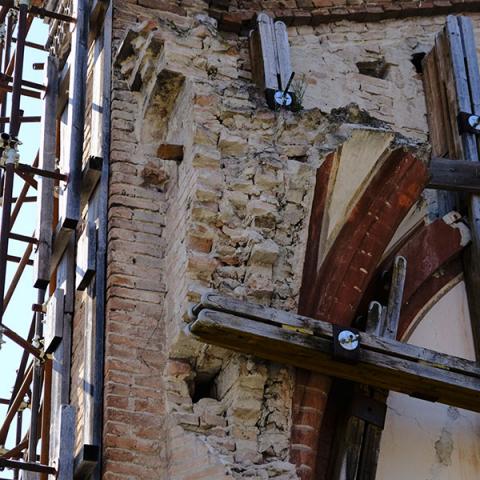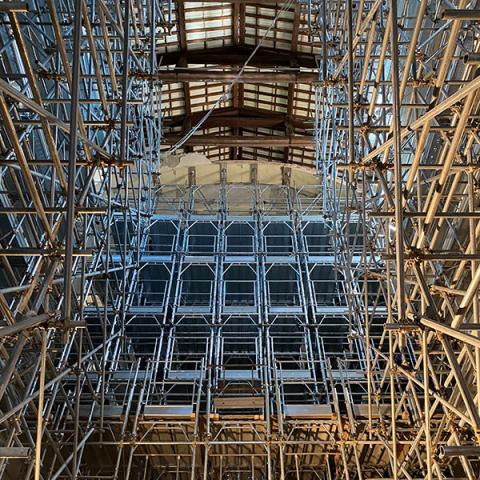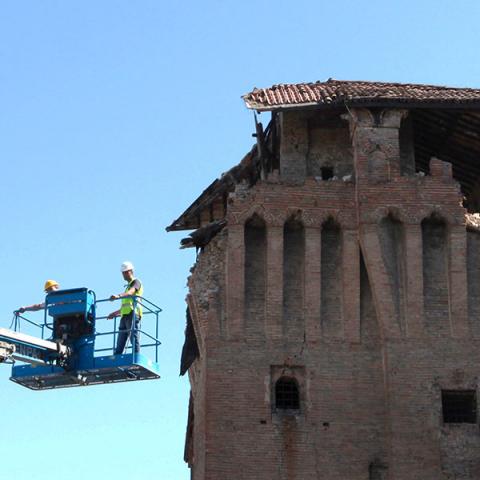antonino.libro
IL RESTAURO DELLA ROCCA POSSENTE DI STELLATA
Dopo aver affrontato nei tre precedenti articoli, curati dall’Agenzia per la ricostruzione – sisma 2012, alcuni temi propedeutici ad un cantiere di restauro e illustrato come l’esperienza della ricostruzione emiliana abbia integrato tali buone pratiche nei processi autorizzativi, si vuole raccontare, nel presente articolo, uno degli interventi che riteniamo possa essere paradigmatico: il miglioramento sismico e restauro post sisma della Rocca Possente sita a Stellata di Bondeno, posto ai confini nord della provincia di Ferrara.
THE RESTORATION OF THE ROCCA POSSENTE LOCATED IN STELLATA
After having addressed in the three previous articles, edited by the Agency for the Reconstruction - earthquake 2012, some preparatory issues for a restoration site and illustrated how the experience of the Emilian reconstruction has integrated these best practices in the authorization processes, we want to tell, in this article, one of the interventions considered paradigmatic in the entire crater: the seismic improvement and post-seismic restoration of the Rocca Possente located in Stellata di Bondeno, located on the northern borders of the province of Ferrara.

IL CANTIERE DELLA CONOSCENZA
“La vera conoscenza sta nel conoscere il livello della propria ignoranza”. Questa citazione, attribuita a Socrate, costituisce l’essenza di un progetto di restauro di un bene storico traducibile con “conoscere di più per scegliere meglio”.
L’Agenzia per la Ricostruzione Sisma 2012 della Regione Emilia - Romagna, si propone come partner istituzionale che accompagna il processo di recupero dei beni culturali danneggiati anche tramite il regolamento di attuazione dei piani di ricostruzione delle opere pubbliche e alla messa in pratica di azioni, procedure e strumenti metodologici. L’Agenzia ha costruito un percorso guidato di indirizzo della progettazione strutturando la fase di conoscenza nelle tre fasi: opera provvisionale, progettazione ed esecuzione dei lavori.
L’approccio proposto mira ad incrementare gradualmente la comprensione degli edifici storici con l’avanzare delle fasi, riducendo le incertezze e indirizzando la progettazione verso obiettivi di ottimizzazione strutturale e tutela degli interventi di ripristino post sisma e restauro.
THE KNOWLEDGE WORKSITE
"True knowledge lies in knowing the level of one's own ignorance”. This Socrates’ quote is the essence of a restoration project for a historical building, in the form of "know more to choose better".
The Agency for the 2012 Earthquake Reconstruction of the Emilia - Romagna Region, aims to be an institutional partner that manages the recovery process of damaged cultural heritage also not only through the implementing regulation for the plan of public works but also through the renewal of actions, procedures and methodological tools.
A guideline for the technical design has been developed by the Agency through the structuring of the knowledge construction in a three steps program: provisional work, technical design and execution of works.
This approach aims at gradually increase the understanding of historic buildings, trough the reduction of uncertainties and targeting the technical design towards structural optimization and protection of post-earthquake recovery and restoration work.

Conoscenza e gestione dell'intervento
Il racconto dicotomico di un territorio colpito da un evento sismico di portata significativa, mettendo a confronto i tempi dell’emergenza, necessariamente veloci, e quelli della ricostruzione dei beni culturali che invece interessano tempi più dilatati. La necessità quindi di una governance sulla “qualità” della ricostruzione post sisma con un’attenzione particolare alla prima messa in sicurezza, operazione principe per il corretto inquadramento dell’intervento sia per gli aspetti di compatibilità sia per i necessari equilibri costi benefici. L’intervento di messa in sicurezza, quindi, quale fase “zero” del processo di restauro.
KNOWLEDGE AND MANAGEMENT OF THE INTERVENTION
The dichotomous report of a territory hit by a significant earthquake, comparing the emergency timings, necessarily quick, and the ones of the reconstruction phase of cultural heritage, with more dilated times. Therefore it is necessary to manage the quality of the post-seismic reconstruction with a specific attention to the first aid interventions, main operation for a correct frameing of the interventions, both in terms of compatibility and in terms of cost/benefit balance: basically, first aid intervention as a "phase zero" of the restoration process.

Il rilievo del danno al patrimonio storico-artistico
Una riflessione sulle delicate fasi di rilievo del danno sul patrimonio storico-artistico a seguito degli eventi sismici che hanno colpito l’Emilia nel 2012. Un’analisi su ciò che significa rilevare gli edifici storici approcciandosi a questa fase attraverso una molteplicità di letture che vanno dalle prime indicazioni di messa in sicurezza all’accessibilità dei siti, dalla rimozione e catalogazione delle macerie alla compilazione ed implementazione delle schede di rilievo del danno. Un’operazione complessa, o un complesso di operazioni, che ha come fine l’immediata salvaguardia del bene e che, anche con l’aiuto di nuove tecnologie, deve far emergere i contenuti prodromici al restauro.
The damage survey on cultural heritage
Some reflections about the delicate phase of damage survey on cultural heritage after the seismic events that hit Emilia in 2012. An analysis about the meaning of surveying damaged historical buildings in view of the multiple implications of this phase: the indications for first aid interventions, the problems of accessibility, the removal and cataloguing of debris, the compilation of the damage survey files. A complex operation, or a complex of operations, that has its final aim in the conservation of the cultural assets and that, also with the help of new technologies, has to reveal the contents necessary for the following restoration phase.

